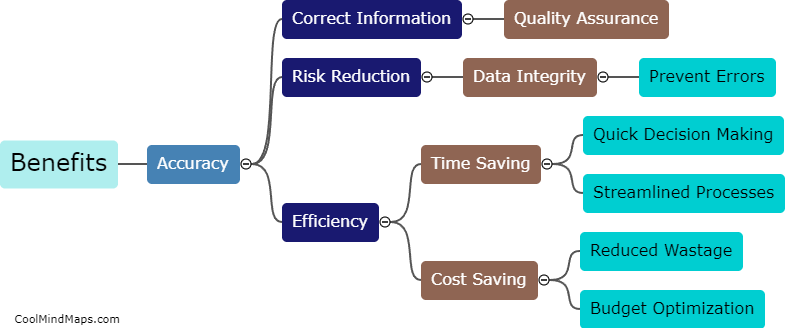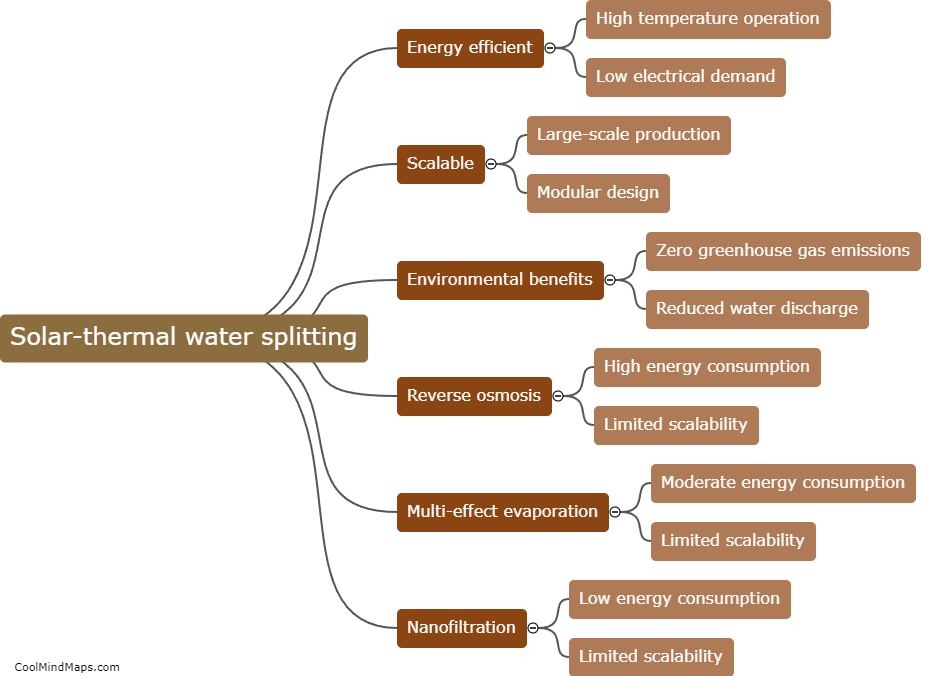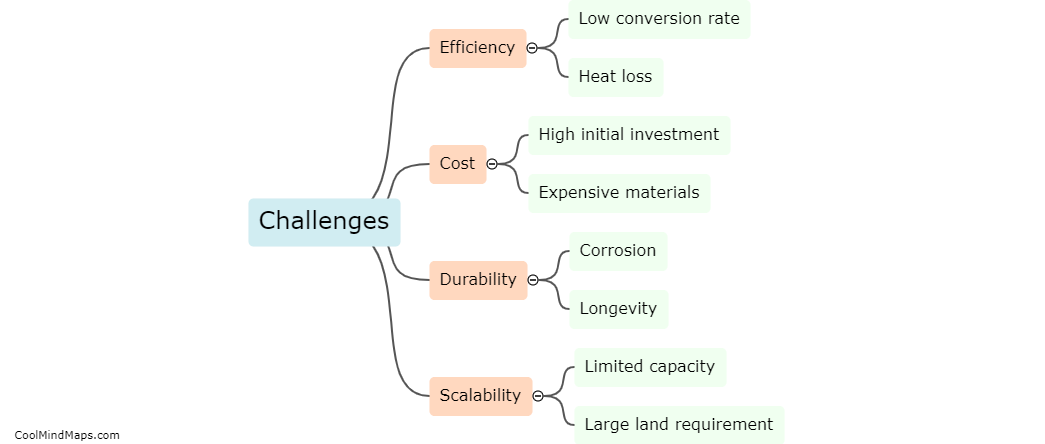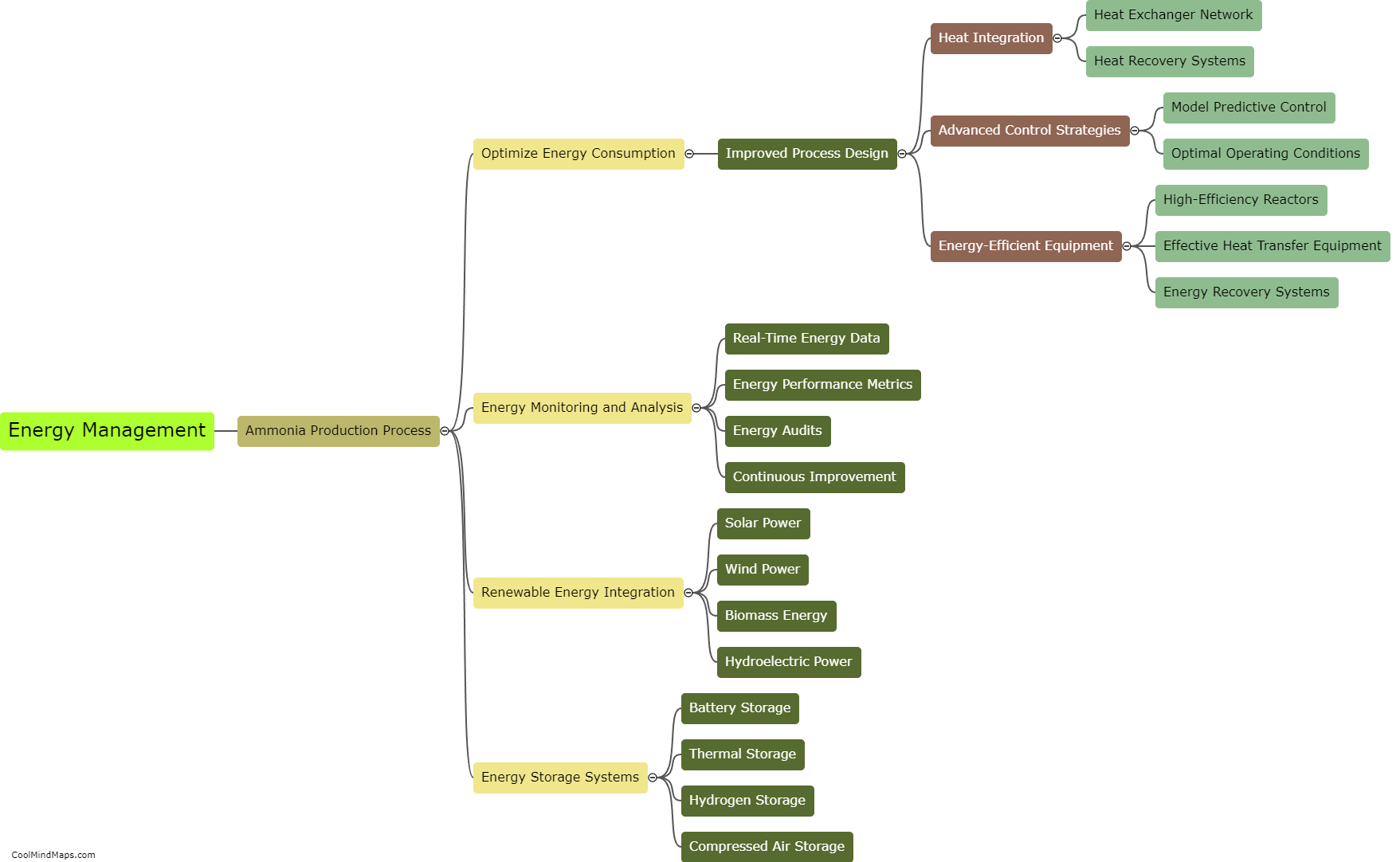What are the advantages of using solar-thermal water splitting for ammonia production?
Solar-thermal water splitting offers several advantages in terms of ammonia production. First and foremost, it is a sustainable and renewable method that utilizes solar energy, reducing reliance on fossil fuels and minimizing greenhouse gas emissions. This process also presents a high energy conversion efficiency, as it harnesses concentrated sunlight to directly split water into hydrogen and oxygen. The generated hydrogen can then be used as a feedstock for ammonia synthesis, a key ingredient in fertilizer production. Moreover, solar-thermal water splitting systems can be easily integrated into existing ammonia plants, making it a viable option for retrofitting and upgrading conventional facilities. This approach not only contributes to a greener and more sustainable ammonia industry but also enhances energy security by diversifying energy sources.

This mind map was published on 4 October 2023 and has been viewed 59 times.











